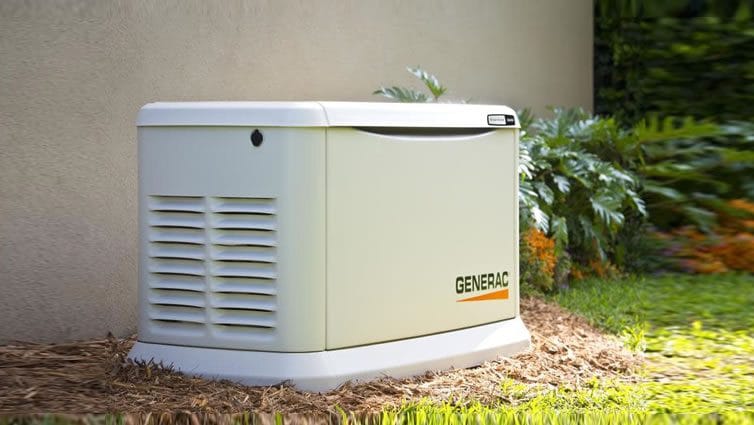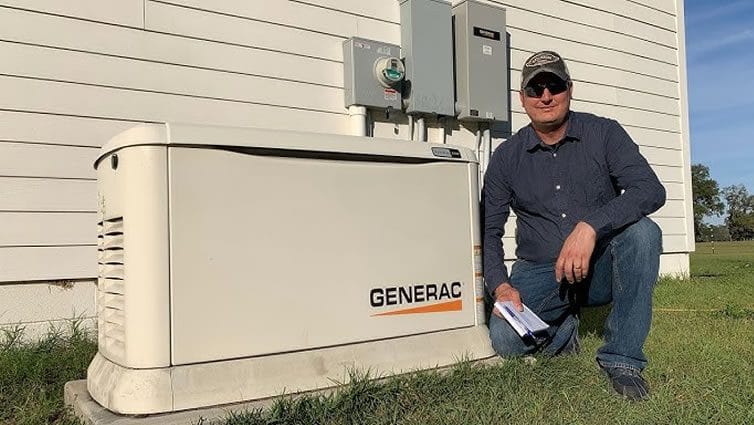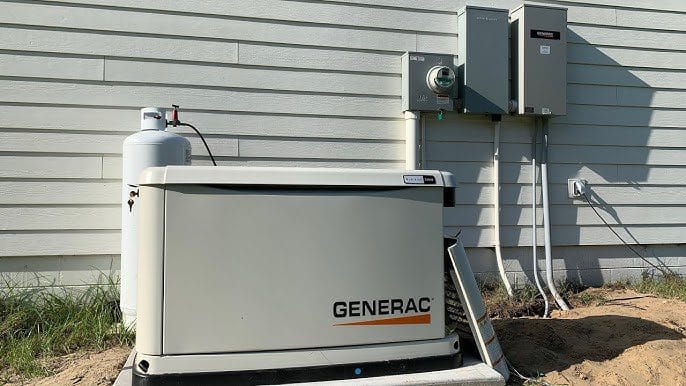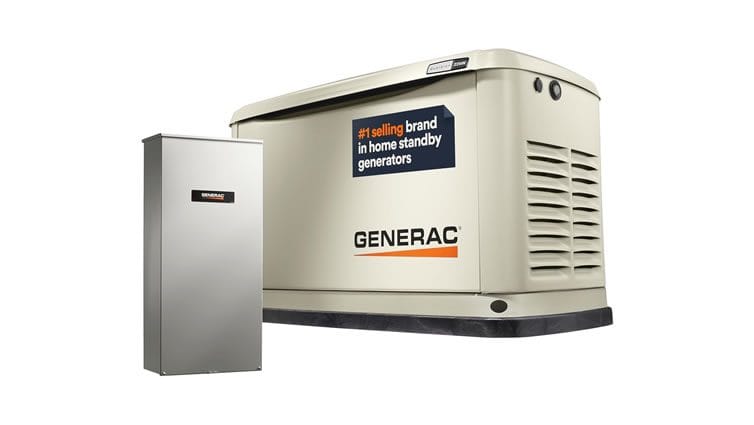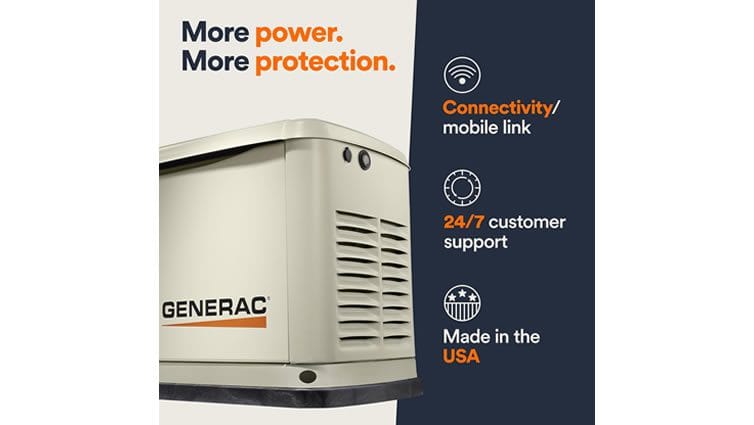Table of Contents
ToggleIntroducing Generac Standby Generator
Generac standby generators are essential tools for ensuring your home remains powered during unexpected outages. Whether it’s a severe storm, a fallen tree, or maintenance on local power lines, having a reliable generator can keep your family safe and comfortable. However, to maximize their benefits and ensure safety, it’s crucial to follow specific guidelines. In this article, we’ll explore five essential tips for using your Generac standby generator safely and effectively. From installation best practices to routine maintenance, these insights will help you harness the power of your generator while keeping your home secure.
Understanding Your Power Needs
When it comes to selecting the right Generac standby generator, understanding your power needs is the first step. You may be wondering, “How do I figure out what I need?” Don’t worry! We’re here to break it down in a fun and easy way. Knowing how much power you need ensures your generator can handle everything during an outage. Let’s dive into how to assess your needs, so you can enjoy peace of mind.
Assessing Your Essential Appliances
The first thing to do is take stock of your essential appliances. Think about the devices and systems you rely on every day. This includes refrigerators, heaters, and medical equipment. Make a list of everything you want to power during an outage. Next to each item, note its wattage requirements. You can usually find this information on the appliance itself or in the user manual. If you’re not sure, a quick online search can help.
Once you have your list, add up the wattage for each item. This total will give you a good idea of your minimum power needs. Remember, some appliances require extra power to start, which is called surge wattage. Make sure to account for that as well. For instance, your refrigerator might use 700 watts normally but could require 1,200 watts to start. Adding this surge wattage to your calculations ensures your Generac standby generator won’t let you down when it matters most.
Choosing the Right Generator Size
After assessing your essential appliances, the next step is choosing the right generator size. Generac offers various models, each with different wattage capacities. It’s essential to select a generator that can meet your total wattage requirements, including both running and starting watts. A common rule of thumb is to choose a generator with a capacity that exceeds your total wattage needs by at least 20%.
For example, if your total wattage needs are 5,000 watts, consider a generator that can provide around 6,000 watts. This extra capacity allows for any unforeseen increases in power demand. If you’re unsure about which model to choose, Generac has helpful resources on their website to guide you through the selection process. You can also consult with a professional installer who can assist in determining the best option for your home.
Considering Future Power Needs
As you think about your current power needs, it’s also wise to consider future needs. Will you be adding new appliances or expanding your family in the next few years? If you plan to upgrade your home, such as adding an electric vehicle or a new heating system, factor in the additional power requirements.
It’s often a good idea to plan for the future when choosing your Generac standby generator. By selecting a slightly larger model now, you can avoid the hassle and expense of upgrading your generator later. Future-proofing your power needs ensures you’re prepared for whatever comes your way, keeping your home comfortable and secure.
Understanding the Load Management System
Now that you have an idea of your power needs and the right generator size, let’s talk about load management systems. Some Generac standby generators come equipped with advanced load management features. These systems can help distribute power efficiently to your appliances during an outage.
Load management systems prioritize which appliances receive power first, ensuring that your most critical devices are powered up. For instance, if your generator’s capacity is being stretched, the load management system might temporarily turn off non-essential appliances to keep the refrigerator running. This smart approach to power distribution can be a game-changer during extended outages.
If your generator doesn’t have a built-in load management system, consider investing in one. It allows you to control your power distribution more effectively, ensuring that your essential devices remain functional. Understanding how load management works can further enhance your experience with your Generac standby generator, giving you even more control over your home’s power supply.
Putting It All Together
In conclusion, understanding your power needs is a crucial first step when considering a Generac standby generator. By assessing your essential appliances, choosing the right generator size, planning for the future, and utilizing load management systems, you can ensure that your home stays powered during outages.
Don’t forget to take the time to gather information about your appliances, and don’t hesitate to reach out for help when needed. With a little effort and planning, you can confidently choose a generator that meets your needs. Before you know it, you’ll have the peace of mind that comes with knowing your home will remain comfortable and secure, no matter what the world throws your way. Now, go ahead and make that list of appliances, and let’s get you prepared for any power outage!
Choosing the Right Location for Installation
Selecting the right location for your Generac Standby Generator installation is crucial for both safety and functionality. You might think that any spot in your yard will do, but there are some key factors to consider. Finding the perfect spot will ensure your generator operates efficiently while keeping your home safe and sound. Let’s explore how to choose the best location for your generator installation.
Assessing Your Space and Surroundings
First, take a good look at your yard. Is it spacious enough for a generator? Ideally, you want a flat, dry area that is free of obstacles. Look for a spot that is at least five feet away from any structures, trees, or fences. This distance helps ensure proper airflow and prevents any potential fire hazards. A clear space will also make it easier for maintenance and service access later on.
Consider the overall layout of your property too. If you have a larger yard, choose a spot that doesn’t disrupt your outdoor space. You want your Generac Standby Generator to be effective without becoming an eyesore. Finding a balance between functionality and aesthetics is important. If you’re unsure about the best spot, don’t hesitate to ask a professional installer for their advice. They can help you make the best decision based on your specific setup.
Ensuring Proper Ventilation
Next up is ventilation. Generators need ample airflow to operate safely and efficiently. Avoid placing your Generac Standby Generator in a confined space, like a garage or shed. These areas can trap exhaust fumes, which can be dangerous for you and your family. Instead, choose an open area with good airflow.
A common recommendation is to position the generator at least three feet away from any walls or shrubs. This distance ensures that exhaust gases disperse properly and prevents overheating. If you’re worried about aesthetics, consider landscaping around your generator. Just make sure to keep the plants trimmed and away from the generator’s exhaust vents. With some careful planning, you can create a safe and visually appealing setup.
Considering Noise Levels
One thing you might not think about is noise levels. Generac Standby Generators can be a bit noisy while running, so consider how sound will affect your family and neighbors. It’s best to place the generator away from bedrooms and common areas. If possible, position it on the side of the house that is furthest from your living spaces.
Check local noise ordinances as well. Some neighborhoods have specific rules regarding generator noise. Being considerate of your neighbors will go a long way toward maintaining good relationships. Plus, it’ll give you peace of mind knowing that you’re not disrupting anyone’s day while your generator does its job.
Planning for Accessibility
While it’s important to consider aesthetics and noise levels, don’t overlook accessibility. You want your Generac Standby Generator to be easy to access for maintenance and repairs. Choose a location that allows easy entry for service personnel and yourself. If the generator is hard to reach, it can lead to delays in service or even neglect over time.
Think about how often you’ll need to check on the generator. Even if it’s set to automatically turn on during an outage, regular maintenance is key. Make sure you have enough space around the generator for safe movement and maintenance access. A little planning now can save you a lot of headaches later.
Checking Local Regulations and Codes
Before you finalize the location for your generator, be sure to check local building codes and regulations. Some areas have specific requirements for generator placement. This might include distances from property lines, structures, or other important safety factors.
Consulting local regulations can save you from costly mistakes down the line. Plus, it ensures that your installation complies with safety standards. If you’re working with a professional installer, they will usually handle this aspect for you. However, it’s still a good idea to be informed about any specific local codes that may affect your installation.
Choosing the right location for your Generac Standby Generator installation is vital for safety and efficiency. By assessing your space, ensuring proper ventilation, considering noise levels, planning for accessibility, and checking local regulations, you can make an informed decision.
Take your time to evaluate different areas in your yard and don’t rush the process. A well-placed generator can provide peace of mind during power outages, keeping your home comfortable and safe. Once you’ve chosen the ideal location, you’ll be one step closer to enjoying the many benefits of your Generac Standby Generator. Happy planning!
When it comes to using a Generac Standby Generator, safety should always be your top priority. These generators provide power during outages, but if not handled properly, they can pose risks. Luckily, with some straightforward precautions, you can enjoy the benefits of your generator without any worries. Let’s explore some essential safety tips that will keep you and your family safe while using your generator.
Proper Installation Matters
The first step in ensuring safety is proper installation. It might be tempting to set up your Generac Standby Generator on your own, but it’s always best to hire a professional. These experts understand the necessary codes and regulations. They can ensure your generator is installed safely and correctly. A proper installation minimizes risks and maximizes the efficiency of your generator.
Make sure your generator is installed outdoors in a well-ventilated area. As we discussed earlier, placing it too close to your home can trap exhaust fumes. This poses a significant safety risk. Ensure your installation team places the generator at a safe distance from doors, windows, and vents. This way, any harmful gases can dissipate without affecting your living space.
Regular Maintenance is Key
Just like any other home appliance, your Generac Standby Generator needs regular maintenance. This helps keep it in top shape and prevents unexpected issues. Schedule routine checks to ensure everything is functioning properly. It’s important to clean the air filter, check the oil levels, and inspect the fuel system regularly.
If you’re not comfortable doing this yourself, don’t hesitate to hire a professional. Keeping up with maintenance helps you avoid potentially dangerous situations. Plus, it extends the lifespan of your generator, so you get more bang for your buck. Remember, a well-maintained generator is a safe generator!
Avoiding Overloading Your Generator
One common mistake many people make is overloading their generators. When you plug in too many devices, you risk damaging the generator and creating safety hazards. Always check the wattage ratings of the appliances you plan to use. Add them up to make sure they don’t exceed your Generac Standby Generator‘s capacity.
If you’re unsure about how much power you need, consult your user manual or a professional. They can help you calculate your total power needs accurately. Using a generator within its capacity will keep it running smoothly and safely. Plus, it will give you peace of mind knowing you’re not pushing it beyond its limits.
Fuel Safety is Crucial
Using the right fuel and handling it safely is essential for the operation of your Generac Standby Generator. Always use the fuel recommended by the manufacturer. Using the wrong type can lead to performance issues and safety hazards.
When storing fuel, keep it in a safe, cool, and dry place. Make sure it’s stored in approved containers and away from any heat sources. Also, be sure to label your fuel containers clearly. This will help prevent any mix-ups. Remember, safety first!
Avoid filling your generator while it’s running or hot. This can lead to spills and create fire hazards. Allow the generator to cool down before refueling, and make sure to clean up any spills immediately. By taking these simple precautions, you can enjoy the convenience of your Generac Standby Generator without any worries.
Ensuring Carbon Monoxide Safety
One of the most serious risks associated with generators is carbon monoxide poisoning. This colorless, odorless gas can be deadly, so it’s crucial to take precautions. Always operate your Generac Standby Generator outside and away from doors and windows. This prevents harmful fumes from entering your home.
Installing carbon monoxide detectors throughout your home is also a smart move. These devices alert you to dangerous gas levels, giving you time to take action. Test your detectors regularly to ensure they’re functioning properly. If they start to beep, don’t ignore it! Act quickly to protect your family.
In case of a power outage, make sure everyone in your household knows how to use the generator safely. Hold a quick family meeting to review safety procedures. Ensure everyone understands the importance of keeping doors and windows closed while the generator is running. Knowledge is your best defense against potential hazards.
Safety is paramount when using a Generac Standby Generator. By focusing on proper installation, regular maintenance, avoiding overloading, ensuring fuel safety, and being aware of carbon monoxide risks, you can enjoy peace of mind.
Remember, taking these essential precautions can make all the difference in keeping your home and family safe. Investing a little time and effort into safety will pay off when you need your generator the most. So, gear up, stay informed, and power up your home safely with your Generac Standby Generator!
Local Regulations and Permits for Generators
When you decide to install a Generac Standby Generator, it’s essential to understand the local regulations and permits that may apply. You might think that setting up a generator is as simple as picking a spot in your yard, but there’s more to it! Following local guidelines helps ensure your installation is safe, legal, and hassle-free. So, let’s dive into the world of regulations and permits so you can get your generator running smoothly.
Why Regulations Matter
Understanding local regulations is crucial for a few reasons. First, they exist to protect you and your property. Improper installations can lead to safety hazards, noise complaints, or even fines. Regulations set specific standards for installation, ensuring your Generac Standby Generator operates safely and efficiently.
Secondly, knowing the rules can save you time and money. If you skip permits or ignore local guidelines, you could face hefty fines or be required to redo your installation. No one wants to deal with that kind of hassle! By taking the time to understand the regulations upfront, you set yourself up for a smooth installation process.
Researching Local Requirements
The first step in navigating local regulations is to research your area’s requirements. Every city, county, or state may have different rules regarding generator installations. Check with your local building department or municipal office. They can provide you with the most accurate and up-to-date information.
You can also find helpful resources online. Many local governments maintain websites with details about permits and regulations for home installations, including generators. Keep an eye out for specific requirements, such as setbacks from property lines, noise restrictions, or specific zoning laws. Knowing these details will help you choose the best spot for your Generac Standby Generator.
Permits You Might Need
In most cases, installing a Generac Standby Generator requires permits. These permits ensure that your installation meets safety standards and local building codes. Depending on your location, you might need a building permit, electrical permit, or even a plumbing permit if your generator connects to gas lines.
Be prepared to fill out some paperwork and possibly pay a fee. While this may seem annoying, it’s a small price to pay for safety and peace of mind. Once you’ve obtained the necessary permits, keep them on hand in case you need to show them later. It’s always good to have documentation readily available, just in case!
Hiring a Professional Installer
If the process of obtaining permits seems overwhelming, don’t worry! Hiring a professional installer can take a load off your shoulders. Many experienced installers are familiar with local regulations and will handle the entire permitting process for you.
When choosing an installer, ask about their experience with Generac Standby Generators and local regulations. A qualified installer will not only ensure your generator is set up correctly but also help you navigate the paperwork. This way, you can relax and let them do the heavy lifting while you enjoy the peace of mind your generator brings.
Preparing for Inspections
Once your generator is installed, be prepared for inspections. Depending on your area, local officials might need to inspect your Generac Standby Generator to ensure it meets all safety and compliance standards. This step is important for verifying that everything is in order.
Make sure to keep your installation area clean and accessible for the inspector. They will look at various aspects of the installation, including the location, fuel connections, and electrical work. If you’ve followed all regulations and worked with a qualified installer, you should pass inspection without any issues.
Staying Informed and Updated
Regulations can change over time, so it’s essential to stay informed about any updates in your area. After you’ve installed your Generac Standby Generator, continue to monitor local codes and regulations. Subscribe to local newsletters or check the website of your local building department periodically. This way, you’ll be aware of any new rules that may affect your generator or future home improvements.
Final Thoughts on Regulations
In summary, understanding local regulations and permits is a crucial step when installing a Generac Standby Generator. Doing your homework, obtaining the necessary permits, and working with professional installers will make the entire process smoother.
Regulations are in place to ensure safety, compliance, and peace of mind. By following them, you’ll enjoy the benefits of your generator without any unnecessary headaches. So, roll up your sleeves, dive into the details, and get ready to power up your home with your new generator.
Recent Posts

